
Rhinoplasty Surgery
Rhinoplasty is a surgery that reshapes the nose or fixes the breathing process. It can be done by an expert Ear-Nose-Throat surgeons or plastic surgeons, and it’s known to be a low risk surgery.
Before doing Rhinoplasty, the patient must define the change of their nose, and the doctor have to determine the possible changes for the patient. The doctor will start planning for the operation after comparing the structure of the nose, cartilage, face structure, and skin type according to patient’s desire.

How Should The Nose Be Ideal?
The ideal nose must be symmetrical and have a natural appearance that matches the face, also helps to breathe naturally. However, the ideal nose concept is different from person to another, and from country to another. The components of the nose must be in harmony with each other and provides a suitable appearance for the face type. Rhinoplasty aims to achieve this harmony and get a nose with a natural appearance.
When Should A Rhinoplasty Be Performed?
- If you are not satisfied about the appearance or the size of your nose.
- If your nose is too big or too small or doesn’t match your face
- If you have breathing problems.
- If your nose is too big and heavily curved.
- If you have congenital problems or had an accident.
For a healthier life and better appearance, you should perform Rhinoplasty.
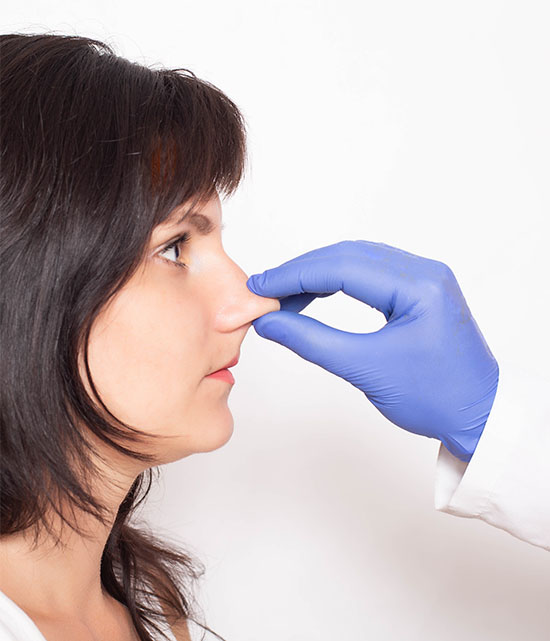
The most important reasons that leads to a cosmetic surgery for the nose are deformities and respiratory problems. Genital abnormalities usually occur because of genetic factors. However, occasional accidents, trauma or subsequent tumors may cause deformities.
Congenital Problems: depending on the genetic code of the person, the nose may be poorly shaped, causing breathing difficulties. In such cases which are usually caused by the family, the person may want to change the shape of their nose according to the general understanding of beauty. People who complain of their noses can consult specialists in nose aesthetic.
Problems Caused By Accidents: Trauma and accidents can cause a deterioration of the shape of the nose. In particular, falling in childhood can damage the nose bone and adversely affect the development of it. Untreated nasal bone fractures can cause deformities and difficulty in breathing. In adulthood, there may be deterioration in the shape of the nose for people who have suffered trauma, accidents and those interested in combat sports. Although it is not very common, only the nasal tumor and the operations performed to remove this tumor may also cause deformities in the nose. In such cases, Rhinoplasty may be needed.

Expectations: You should discuss your expectations and purpose of surgery with your doctor. Your doctor will tell you what to do with Rhinoplasty and what the result might be.
Medical History: One of the most important things your doctor needs to know is the cause and purpose of the surgery. You should determine the changes you want to make in your nose and the problems you feel uncomfortable with. Another important issue is your medical history, you should inform your doctor about the medicines you are using and whether you are suffering from nasal congestion and the diseases you have suffered.
Physical Examination: Before the operation, some laboratory tests will be performed by your doctor. In addition, after examining the structure of your face from inside and outside, Your doctor will examine your physical characteristics and health generally, and determine if you can have the operation and what changes can be made to your nose.
Pictures: Before and after the surgery, your nose is photographed from different angles. This way you will have the opportunity to compare your appearance before and after the operation.
Nutrition And Drugs: Two weeks before the operation, avoid taking Aspirin and Ibuprofen medications because it will increase bleeding. You also need to stop smoking cause it delays the healing process and increases the risk of infection.

Rhinoplasty, which is done under general anesthesia, takes about 1-3 hours. In some cases, it may be a little longer. Rhinoplasty process have two different techniques, opened and closed.
Opened Rhinoplasty: This process is done by opening a small incision at the bottom of the nose holes and removing the skin. This technique gives the surgeon a wider viewing angle. Also, this technique is used for patients with advanced deformity or prior history in cosmetic surgery.
Closed Rhinoplasty: in this method, the cracks are inside the nose holes. Although the viewing angle is limited in this technique, there is no possibility of visible suture scars from the outside. In addition, recovery time is relatively shorter and bruises and edema may be less than opened Rhinoplasty.
The most important reasons that leads to a cosmetic surgery for the nose are deformities and respiratory problems. Genital abnormalities usually occur because of genetic factors. However, occasional accidents, trauma or subsequent tumors may cause deformities.
Congenital Problems: depending on the genetic code of the person, the nose may be poorly shaped, causing breathing difficulties. In such cases which are usually caused by the family, the person may want to change the shape of their nose according to the general understanding of beauty. People who complain of their noses can consult specialists in nose aesthetic.
Problems Caused By Accidents: Trauma and accidents can cause a deterioration of the shape of the nose. In particular, falling in childhood can damage the nose bone and adversely affect the development of it. Untreated nasal bone fractures can cause deformities and difficulty in breathing. In adulthood, there may be deterioration in the shape of the nose for people who have suffered trauma, accidents and those interested in combat sports. Although it is not very common, only the nasal tumor and the operations performed to remove this tumor may also cause deformities in the nose. In such cases, Rhinoplasty may be needed.
Expectations: You should discuss your expectations and purpose of surgery with your doctor. Your doctor will tell you what to do with Rhinoplasty and what the result might be.
Medical History: One of the most important things your doctor needs to know is the cause and purpose of the surgery. You should determine the changes you want to make in your nose and the problems you feel uncomfortable with. Another important issue is your medical history, you should inform your doctor about the medicines you are using and whether you are suffering from nasal congestion and the diseases you have suffered.
Physical Examination: Before the operation, some laboratory tests will be performed by your doctor. In addition, after examining the structure of your face from inside and outside, Your doctor will examine your physical characteristics and health generally, and determine if you can have the operation and what changes can be made to your nose.
Pictures: Before and after the surgery, your nose is photographed from different angles. This way you will have the opportunity to compare your appearance before and after the operation.
Nutrition And Drugs: Two weeks before the operation, avoid taking Aspirin and Ibuprofen medications because it will increase bleeding. You also need to stop smoking cause it delays the healing process and increases the risk of infection.
Rhinoplasty, which is done under general anesthesia, takes about 1-3 hours. In some cases, it may be a little longer. Rhinoplasty process have two different techniques, opened and closed.
Opened Rhinoplasty: This process is done by opening a small incision at the bottom of the nose holes and removing the skin. This technique gives the surgeon a wider viewing angle. Also, this technique is used for patients with advanced deformity or prior history in cosmetic surgery.
Closed Rhinoplasty: in this method, the cracks are inside the nose holes. Although the viewing angle is limited in this technique, there is no possibility of visible suture scars from the outside. In addition, recovery time is relatively shorter and bruises and edema may be less than opened Rhinoplasty.
We feel free to share some feedback from our honorable Patients
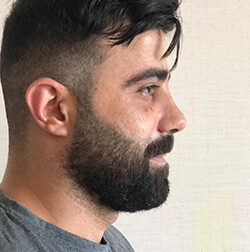
David Smith, Rinoplasty
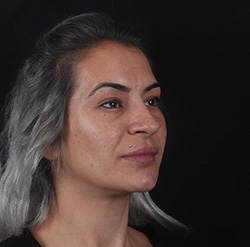
Adrity Banerjee, Rhinoplasty
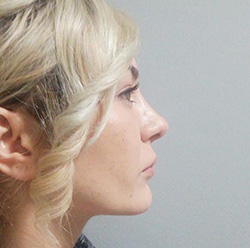
Fatima Aliya, Rhinoplasty
Nasal Septum Deviation (Septoplasty)
Is the area that divides the nasal cavity and consists of bone and cartilage and called “nasal barrier”. Deflection of the barrier creates a blockage in the nose, causing difficulties in breathing. The process of correcting the curvature of the barrier is called Septoplasty.
Symptoms of deviation of the barrier: difficult breathing, nasal congestion, sinusitis, nasal bleeding, headache, nasal discharge and dry mouth. All of these symptoms makes life much harder.
This operation is performed under local or general anesthesia. The portion of the obstruction is removed or corrected by cutting one side of the barrier through the nose. There will be no change in the appearance of the nose after surgery. After the diaphragm, nasal plugs are often not used and therefore the recovery period feels comfortable.
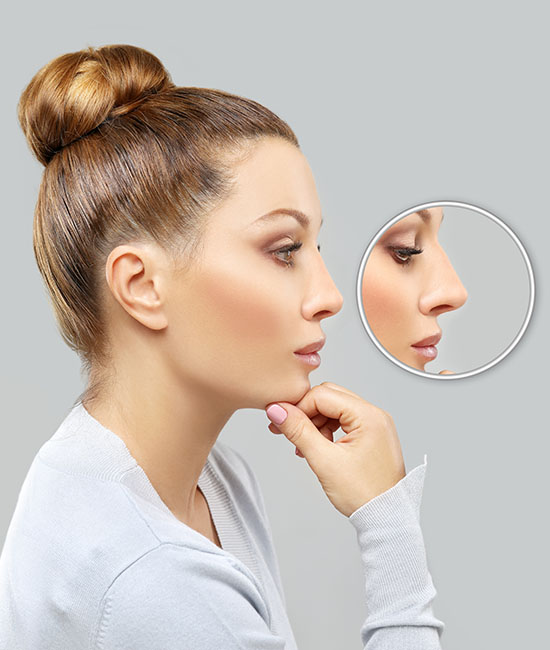
After Septoplasty
It is normal to feel swelling and pain after the correction process. And it will decrease within a few weeks. It is also normal for a small amount of nasal secretions to occur in the early days, and over time it will turn yellow then pink. Exfoliation can occur inside the nose during recovery and this situation lasts from 3 to 6 weeks. In order to accelerate recovery after the operation you should do these steps:
- Be aware not to bump into anything with your nose and avoid moving it.
- Apply cold compresses on the nose to reduce swelling and pain.
- Be careful not to mute sneezing.
- Avoid heavy sports.
- Do not bathe with too hot water.
- Instead of lying down, keep your head 30 degrees higher than the heart level to reduce swelling.
Do not use any medicine without consulting your doctor except for pain relievers prescribed by your doctor.
On the other hand, we denounce with righteous indignation and dislike men who are so beguiled and demoralized by me.
Tipplasty
It is a surgery performed on people who have no problems with their nose but have problems with the tip of it. These kinds of problems are corrected only without touching the nose and nasal barrier.
After adding the necessary cartilage, the incision is closed by cosmetic stitching. As with Rhinoplasty, you should tell your doctor about your expectations. Attention must be paid to each step before and after the operation. This operation is shorter than the normal Rhinoplasty, it is performed under local or general anesthesia depending on the situation and lasts for 30-60 minutes. This surgery can be done without using nose plugs but if necessary to help you breathe it is possible to use nasal stoppers of silicone.
After surgery the nose adhesive is used. The bruising is less, and the recovery period is shorter, so that it is possible to return to daily life in a short time.
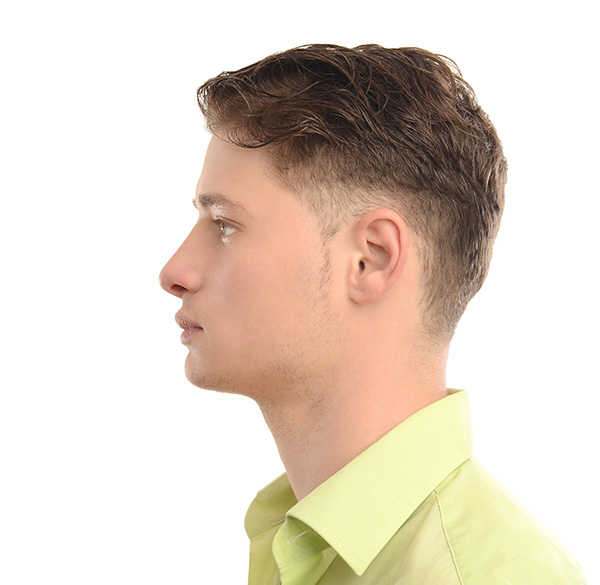
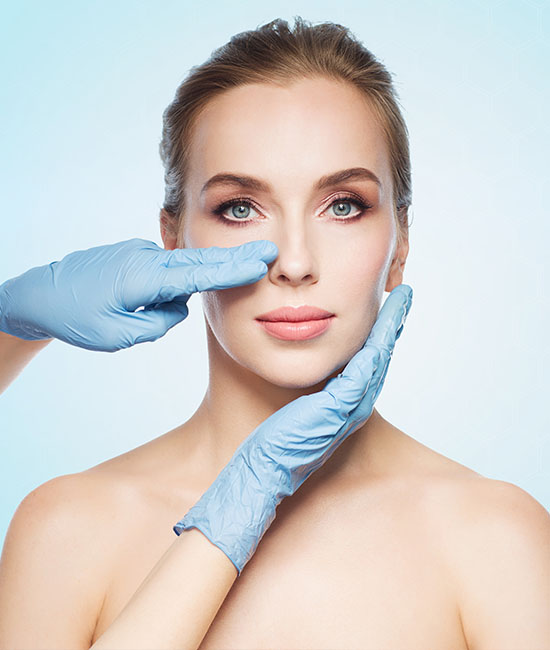
Who Can Perform Tipplasty?
This process can be performed according to the person’s desire. It is made to give an aesthetic appearance to people who complain that their nose is sharp, wide or prominent. On the other hand, the structure of the cartilage can damage the nose and create a loss of bone. In this case, the tip of the nose hangs. This change is usually asymmetric. In such a case, cartilage is added to form the nasal tip again. People who have breathing problems can also get rid of them by doing Tipplasty.
After Tipplasty, people often worry about the tip of their nose. However, thanks to surgical techniques developed in recent years, nose surgery has become more successful and there are no problems such as nasal prolapse. Nose can be enhanced by the addition of cartilage, while the nose is formed by these advanced surgical techniques, which are performed with a more precise approach and less damage to the bone of the nose.
In addition, the tip of the nose appears to be raised due to edema at the end of it after the surgery.
When the edema decreases, the tip of the nose descends to its normal position. This is so normal to happen after the surgery and should not be seen as drooping in the nose.
On the other hand, we denounce with righteous indignation and dislike men who are so beguiled and demoralized by me.
After The Operation
It is normal to feel swelling and pain in your nose for 24 hours after surgery. Your doctor will give you the necessary medicines to solve these complaints. It is also normal for a small amount of blood to leak out of your nose during the first few days. To reduce bleeding and swelling after the operation, your head should remain above your chest. In order to keep the bleeding under control, the combined cotton caps are removed within a day or two and the nasal splint is worn.
After about 7 days the nasal splint is removed and the stitching is done and the tape is pasted onto the nose. The presence of bruises and swelling around the nose and eyes after the surgery is normal. Although it reaches its maximum level in the first three days, it is improving within two weeks. Cold compresses help reduce swelling and bruising. In order not to decrease the speed of healing after the operation and maintain bleeding and swelling in the minimum you must do the following steps for couple of weeks:
- Avoid any sports activities.
- As long as you have bandages on your nose, you should shower in the bathtub instead of normal shower.
- Avoid blowing or wiping your nose.
- To avoid constipation, you should eat fiber-rich foods such as vegetables and fruits (Conspitation may cause shrinkage resulting in pressure on the surgical area).
- Avoid extreme facial expressions such as smiling and laughing.
- Teeth should be gently brushed by restricting the movement of the upper lip.
- You should not wear any clothes that goes through the head such as shirts and blouses.
- You should not wear glasses for at least four weeks because they will apply pressure on your nose after surgery.
- You should also use the SPF30 sunscreen when you go out. Excessive exposure to the sun may permanently change your skin color.After Rhinoplasty, be sure not to get any nosebleed. Avoid sneezing strongly. You should avoid smoking and alcohol. You will be allowed to leave the hospital after staying under observation for a short time after the operation. Your doctor will provide you with a home recovery plan.

It is not suitable to everybody, those with nasal problems cannot correct them in this way. It is only suitable for those who don’t want a big change in their noses, such as:
- Who does not need to change the size of their nose.
- Who wants to lift the nose just a bit.
- Who has a simple wrinkles, slight bumps or cavities.
- Who has an asymmetric nose.
- Who has a small nose bone.
- Who has a slight hanging nose.
- Those who wish to breathe comfortably.
- Those with a poor side appearance.
- Those who need corrections after a failed Rhinoplasty.
- Those who want to do the experiment before the normal Rhinoplasty.
By Rhinoplasty without surgery, all the existing complaints such as nasal spasms or deviations are eliminated by filling these areas. The parity of the profile is corrected by raising the nose tip. These small touches change the structure of the nose and give it an aesthetic appearance.
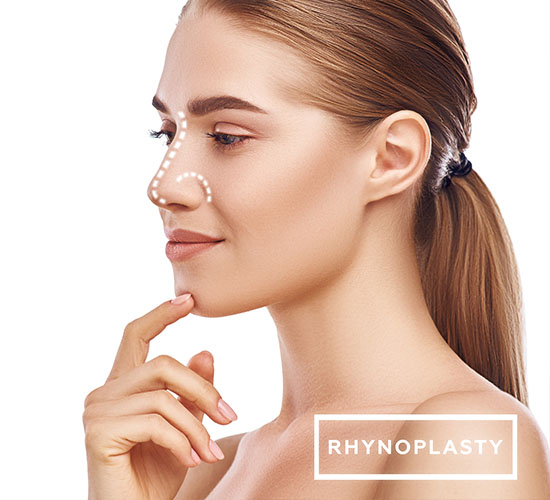
As in other surgeries, Rhinoplasty involves certain risks such as:
- A negative reaction to anesthesia.
- Difficult breathing through the nose.
- Permanent numbness around the nose.
- Asymmetric appearance in the nose.
- Pain for a long time, change in color, or the presence of bulge.
- The presence of surgical scar.
- Allergic reaction.
- Erectile dysfunction.
- Need for additional surgery.
- Not everyone is at risk, but you should talk to your doctor beforehand to see if you are at risk.

Rhinoplasty, which is done under general anesthesia, takes about 1-3 hours. In some cases, it may be a little longer. Rhinoplasty process have two different techniques, opened and closed.
Opened Rhinoplasty: This process is done by opening a small incision at the bottom of the nose holes and removing the skin. This technique gives the surgeon a wider viewing angle. Also, this technique is used for patients with advanced deformity or prior history in cosmetic surgery.
Closed Rhinoplasty: in this method, the cracks are inside the nose holes. Although the viewing angle is limited in this technique, there is no possibility of visible suture scars from the outside. In addition, recovery time is relatively shorter and bruises and edema may be less than opened Rhinoplasty.
It is not suitable to everybody, those with nasal problems cannot correct them in this way. It is only suitable for those who don’t want a big change in their noses, such as:
- Who does not need to change the size of their nose.
- Who wants to lift the nose just a bit.
- Who has a simple wrinkles, slight bumps or cavities.
- Who has an asymmetric nose.
- Who has a small nose bone.
- Who has a slight hanging nose.
- Those who wish to breathe comfortably.
- Those with a poor side appearance.
- Those who need corrections after a failed Rhinoplasty.
- Those who want to do the experiment before the normal Rhinoplasty.
By Rhinoplasty without surgery, all the existing complaints such as nasal spasms or deviations are eliminated by filling these areas. The parity of the profile is corrected by raising the nose tip. These small touches change the structure of the nose and give it an aesthetic appearance.
As in other surgeries, Rhinoplasty involves certain risks such as:
- A negative reaction to anesthesia.
- Other potential risks of Rhinoplasty:
- Difficult breathing through the nose.
- Permanent numbness around the nose.
- Asymmetric appearance in the nose.
- Pain for a long time, change in color, or the presence of bulge.
- The presence of surgical scar.
- Allergic reaction.
- Erectile dysfunction.
- Need for additional surgery.
- Not everyone is at risk, but you should talk to your doctor beforehand to see if you are at risk.
Rhinoplasty, which is done under general anesthesia, takes about 1-3 hours. In some cases, it may be a little longer. Rhinoplasty process have two different techniques, opened and closed.
Opened Rhinoplasty: This process is done by opening a small incision at the bottom of the nose holes and removing the skin. This technique gives the surgeon a wider viewing angle. Also, this technique is used for patients with advanced deformity or prior history in cosmetic surgery.
Closed Rhinoplasty: in this method, the cracks are inside the nose holes. Although the viewing angle is limited in this technique, there is no possibility of visible suture scars from the outside. In addition, recovery time is relatively shorter and bruises and edema may be less than opened Rhinoplasty.




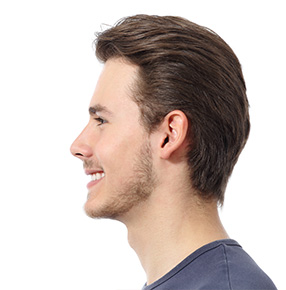
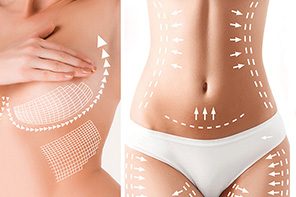
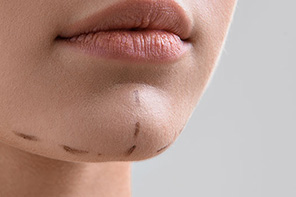

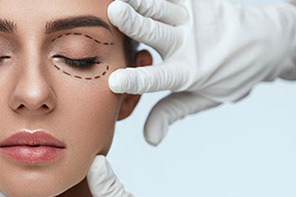
2 Comments
Gia Colombo
3 February 2020 - 10:37How much does a good nose job cost? I’ve heard that the nose job cost is cheaper in Turkey than many others.
Natural Hair Turkey
3 February 2020 - 10:49Hello Gia,
Thank you for choosing Natural Hair Turkey.
The cost will be determined when our medical consultant provides you a free medical examination, to clarify all the details of your condition.